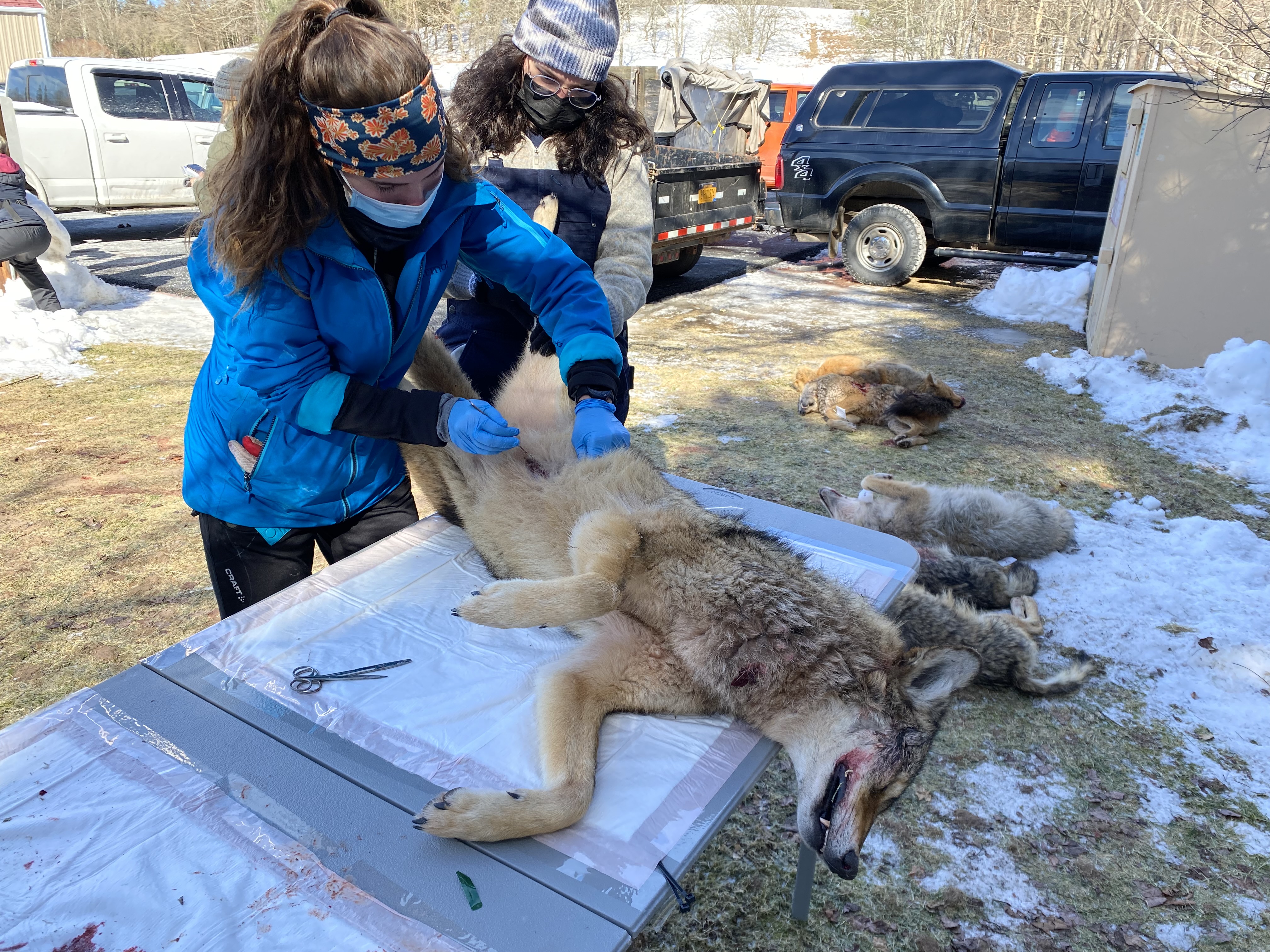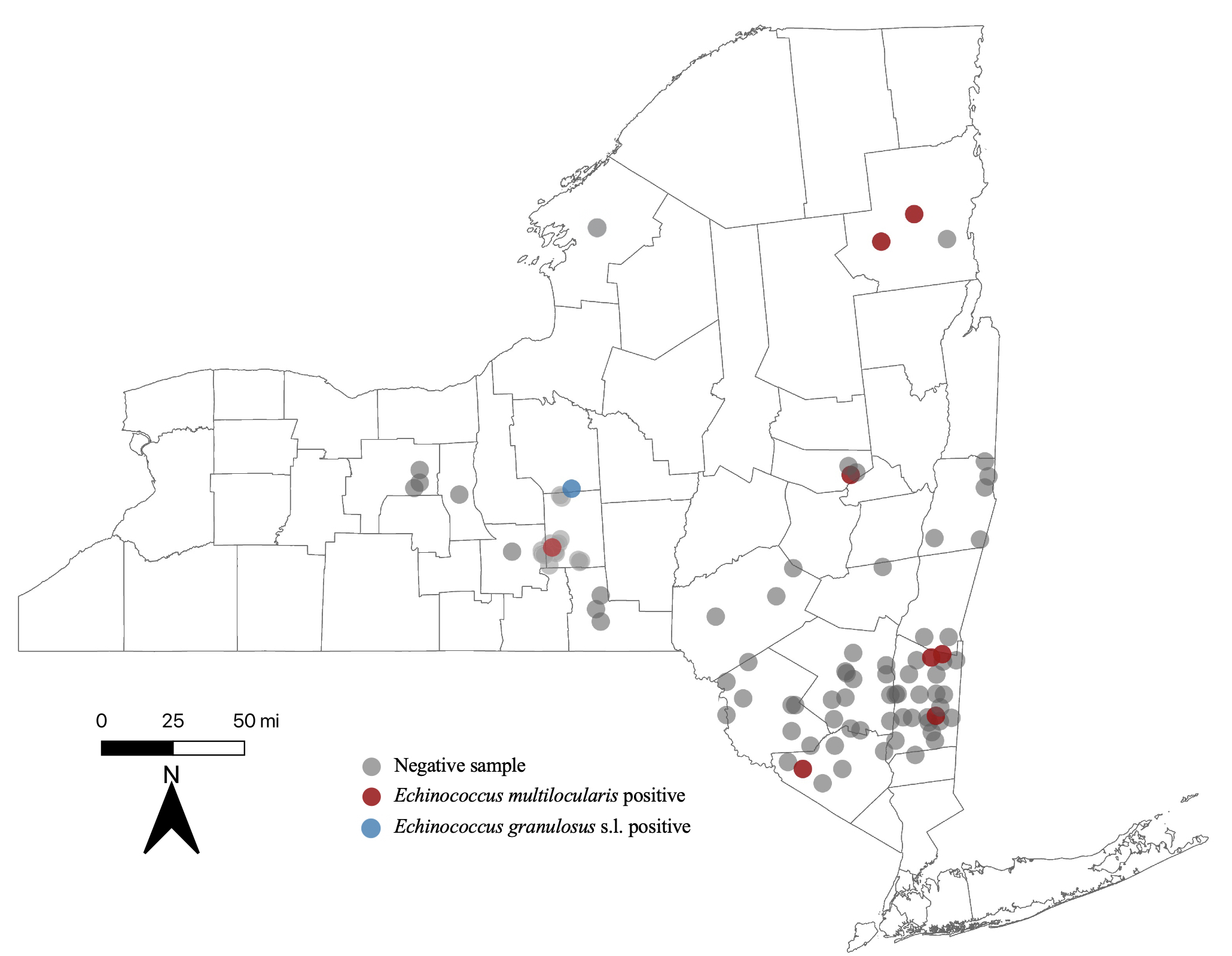Echinococcus multilocularis is a zoonotic tapeworm of wildlife that can be fatal in humans if left untreated. Following the introduction of the European genetic variant of the parasite, rapid expansion of the parasite into the Northeast has resulted in novel detections of spillover to humans, indicating the need for active surveillance to direct public health education and disease control measures.
The WHP, in collaboration with SUNY-ESF, conducted surveillance for E. multilocularis in wild canids (the pathogen’s definitive hosts). From 2021-23, we found 7 positive coyotes and 1 positive gray fox out of 96 animals tested (Figure 1). Genetic analysis of the NY parasites revealed them to be more closely related to the European lineage than the North American lineage, suggesting a recent introduction of this parasite into the region.




